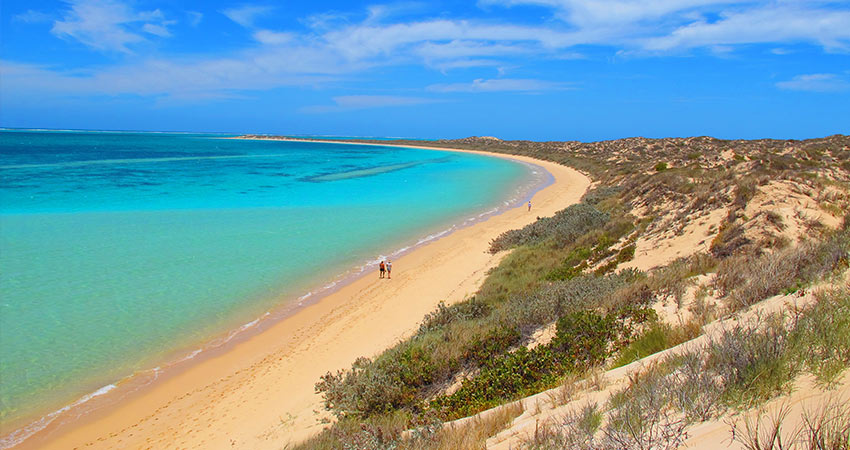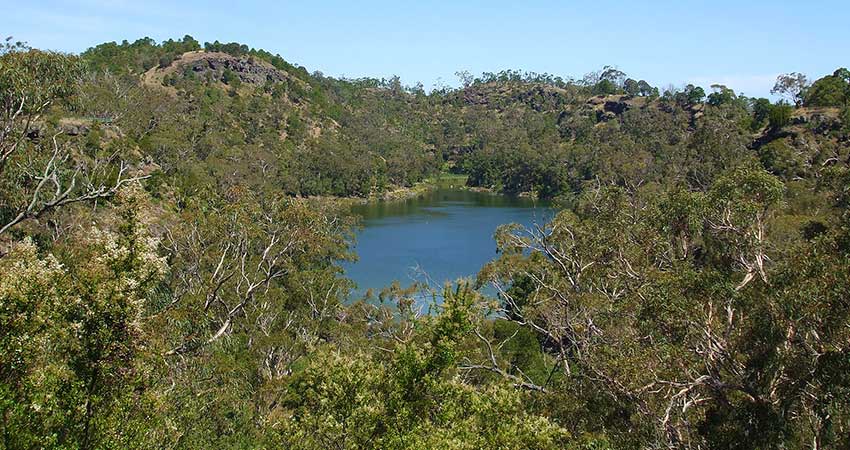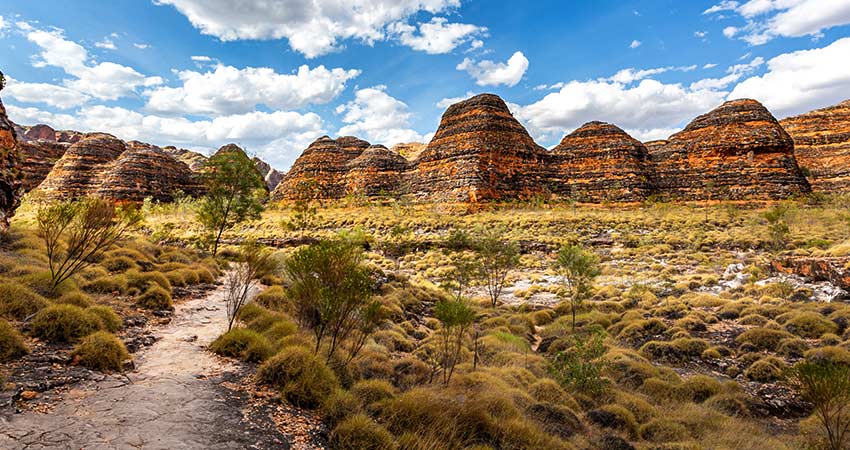Visiting Australia is a bonanza for those who want to explore UNESCO World Heritage sites. The country, and continent, has twenty sites with six more on the tentative list. Four of them are cultural, twelve are natural, and four are listed as both. This gives Australia more natural World Heritage sites than any other country in the world.
These include iconic sites that are an integral part of Australia’s identity, including Uluru, the Sydney Opera House, Kakadu, Melbourne’s Royal Exhibition Building, the Great Barrier Reef, fossil sites, and the Willandra Lakes Region. The most recent addition was the Budj Bim cultural landscape. Australia’s UNESCO membership is quite active—they’ve served as a member of the World Heritage committee for 20 years, most recently in 2021.
Below is a quick sketch of each site, listed from date of admission, the oldest first. Let your imagination go, and imagine seeing these for yourself!
Kakadu National Park
Listed since 1981, the Northern Territory’s Kakadu has rock art and cave paintings that stretch back into the mists of time—they are the oldest on Earth. (Interestingly, rock art in the USA’s Southwest and in Europe has very similar images.) Australia’s Aboriginal people have lived in the area for more than 50,000 years, and the images they left us give us a view into their lives as hunters and as people with a sacred respect for earth’s power. From a perspective of the natural world, you’ll find diverse ecosystems including savannas, waterfalls, forests, mangroves, tidal mudflats, and coastline. There’s also a world of bird, reptile, and fish species living in extraordinary Kakadu.
The Great Barrier Reef
Situated in Queensland, the Great Barrier Reef is a must for any visit to Australia. At 500,000 million years old, coral reefs are among the oldest lifeforms on earth, and the Great Barrier Reef is the largest system we have. Stretching for 1,250 miles, with an area of 135,000 square miles, the reef includes 2,000 islands and 3,000 individual reefs. The best coral is about 30 miles off the mainland, and it is ideal for divers. Go into the water, and you’ll see at least some of the 400 types of coral, 1,500 species of fish, and green sea turtles. The reef is also a barometer that tells us about the shifting earth and climate change.
The Willandra Lakes Region
These lakes, which teemed with life during the Pleistocene Era, became dry beds 18,500 years ago. This area of New South Wales is heaven for archaeologists. Left undisturbed for eons, they have found a cremation site that’s 40,000 years old, early stone tools, and the fossils of giant marsupials. Laid bare is the evidence of environmental changes, and glacial movement, that has occurred over the last 100,000 years.
The Tasmanian Wilderness
Tasmania may be one of the most remarkable in a country that’s filled with wonder. The hearty rainfall has created a system of wild rivers that created astonishing gorges and waterfalls. Aboriginal people lived there at least 40,000 years ago. One of the largest conservation areas in Australia, it covers 6,100 square miles, 25% of Tasmania. It is also one of the last remaining vast expanses of a temperate wilderness in the world. UNESCO recognizes its six plant ecosystems. Most of the life forms are unique to the area and include 30 species of land animals, 120 species of birds, 14 species of reptiles, 7 of frogs, 16 of freshwater fish, and 68 species of marine fish. In all, Tasmania is a miracle!
Lord Howe Island
Located in New South Wales, this is a group of islands about 350 miles off the mainland. The biodiversity here is amazing! It’s a prime spot for sea birds to nest, and the surrounding ocean has the most southern of coral reefs, representing the place where tropical and temperate species meet. In 2001 the world’s largest stick insect, thought to be long extinct, was discovered here!
Gondwana Rainforests
In both New South Wales and Queensland, Gondwana has the largest subtropical rainforest in the world. You’re invited to visit this 906,000 acres to experience major stages in the Earth’s evolutionary history, including biological and geological shifts. There are plants and animals here that have ancient origins, are protected, and live only in the Gondwana Rainforest. There are also threatened species of plants and animals for which this is a safe haven.
Uluru-Kata Tjuṯa National Park
This 512-square-mile park is both a cultural and natural site. Uluru/Myers Rock is one of Australia’s most instantly recognizable landmarks, and it has become a global site of the world’s recognition of Aboriginal culture. To the local people, Anangu, the 500-million-year-old rocky dome is a sacred place, steeped in stories of The Dreamtime. Considered both powerful and potentially dangerous, only those clan members who are initiated may climb it. Tour with a local, eat bush food, and hear stories from the people who know them best. Visit the center for astonishing art—you may want to bring a piece home with you.
Wet Tropics of Queensland
The rainforests in this 208-square-mile area have existed since the ancient Gondwana times. An extraordinarily diverse spot, there are 500 species of life, and it has the highest number of primitive plants, such as ferns, in the world. The Aboriginal Rainforest People of the Wet Tropics of Queensland have lived continuously in the environment for at least 5,000 years; this is the only place in Australia where Aboriginal people have permanently inhabited a tropical rainforest environment. The Daintree Forest, with 3,000 different plant species, is an amazing area to explore!
Shark Bay
This bay is 3,200,000 acres of Marine Park and spectacular coastal scenery. It’s home to numerous endangered species of plants and animals that have, over thousands of years, created an astonishing landscape, including 190 miles of limestone cliffs that overlook the bay.
K’gari / Fraser Island
160-miles north of Brisbane, in Queensland, is the traditional home of the Butchulla people. As told by a tribal elder, Creator Yendingie came down from the sky. First, he made the ocean, then the land, and was then joined by a beautiful white spirit, Princess K’gari. They created the island together. To keep her company, he made trees, flowers, lakes, creeks, laughing waters, birds, animals, people, and the knowledge of how they should behave so K’gari would always have company. The island today has few year-round inhabitants, but it is a very popular spot to visit. Put it on your bucket list!
Australian Fossil Mammal Sites (Riversleigh / Naracoorte)

These two sites in Queensland contain an amazing number of fossil records, because they were in nearly complete isolation for 35 million years. Riversleigh is older, with fossils from 10 – 30 million years ago. It’s also a record of the change from tropical forests to woodlands. Naracoorte’s fossil records date back to the time when humans first arrived in Australia. There is a world of visitor activities at Naracoorte! Take a cave tour. See the inside of Bat Cave, through technology, where thousands of bats breed each year. You can go on adventures that include caving or a specialty tour. Then, head to the Wonambi Fossil Center for displays and dioramas of extinct animals who once roamed the area.
Heard and McDonald Islands

These are the only two active volcanoes in the subantarctic; this is an important region for scientists who research the effects of glaciers, plume volcanism, and the creation of Earth’s crust. Because of their remote position, this area has been undisturbed by human impact.
Macquarie Island

Politically part of Tasmania, Macquarie Island is home to, and the breeding grounds for, king penguins, royal penguins, four different species of albatross, and elephant seals. It’s also paradise for geologists. It’s the only place where rocks from the Earth’s mantle are constantly exposed above sea level. Researchers are able to go 3.7 miles below the ocean floor to study the Earth’s crust. Amazing!
Great Blue Mountains Area

This 2.5 million-acre site is in New South Wales and an easy drive from Sydney. The property includes seven National Parks, and it is gorgeous. Sandstone rises 330 to 4,300 feet above sea level. On higher ridges, the view of basalt columns is breathtaking. This plateau of stone has protected the plants and animals here, including eucalyptus (91 species), heathlands, swamps, wetlands, and grasslands.
Wildlife loves the Great Blue Mountains. There are more than 400 species of animals, including koalas, rare reptiles, bell frogs, grey kangaroos, dingos, flame robins, and pilotbirds. When in Sydney, take a trip into the Blue Mountains for the best of Australia’s natural world.
Purnululu National Park
Situated in Western Australia, the Bungle Bungle Range has dramatic sandstone domes that reach almost 2,000 feet above sea level. They are striped with orange and gray bands, which have occurred because of variations in the sandstone layers. The orange bands have high iron content and they dried quickly. Gray bands are formed when moisture has gathered. They are a dramatic study in nature’s ability to awe us.
Royal Exhibition Building and Carlton Gardens
Into the city of Melbourne and out from the wilds, The Royal Exhibition was built in 1879. Part of the international exhibition movement, it presented more than 50 exhibitions around the world between 1851 and 1915. Today it’s a rocking venue for festivals, fairs, and concerts. The 64-acre site of the Carlton Gardens, which includes the Royal Exhibition, is a beloved area for rest, relaxation, picnics, movie theaters, and a children’s playground.
The gardens are considered to be an ideal rendering of Victoriana. There are sweeping lawns, English oaks, poplars, plane trees, elms, pines, cedars, turkey oaks and evergreens. There are also two lovely ornamental lakes as well as a museum and tennis courts. A tumbling fountain and pristine flower beds also grace these sumptuous gardens. When in Melbourne, go!
Sydney Opera House
This iconic Opera House looks as if it’s about to set sail across the bay and beyond. Inaugurated in 1973, both the design and the technological innovation are unparalleled. This intricate and high-flying building has three interlocking structures that cover two performance halls and a restaurant. When in Sydney, go to the Opera House and peek inside—you’ll likely see performers rehearsing. This is a spectacular base from which to explore the bay and to people watch.
Australian Convict Sites

There are eleven convict sites in Australia located in New South Wales, Norfolk Island, Tasmania, and Western Australia. During the 18th and 19th century, the British Empire sent more than 166,000 women, children, and men to penal colonies. Their forced labor built a colonial infrastructure. Beside the cruel nature of this removal, it was devastating to the Aboriginal people who were pushed into harsh areas and away from ancestral homelands. Knowing this history gives us time to reflect on the resilience of the people who are descendants of the first Europeans and the adaptability of Aboriginal Australians.
Ningaloo Coast

Located in Western Australia, this 1,742,00-acre area is 750 miles north of Perth along the East Indian Ocean. The Ningaloo Reef is quite distinctive, and at 160 miles long is Australia’s largest fringing coral reef. Whale sharks feed there in spring and summer, and it’s a prime migratory route for dugongs, manta rays, humpback whales, and dolphins. It’s also a breeding ground for turtles. This coast has 500 species of fish, 300 species of coral, and 600 species of mollusks. It is a veritable banquet for marine mammals.
Budj Bim Cultural Landscape

The most recent addition to Australia’s UNESCO World Heritage Sites, Budj Bim is in Victoria and has three Indigenous Protected Areas. All correspond to the volcanic eruption 30,000 years ago of Budj Bim / Mount Eccles. (The dormant volcano is part of the UNESCO site.) All areas of the park are enormously important to the clans of Gunditjmara. Budj Bim is featured in their belief system as a creator and in the creation stories. As part of their spiritual culture, they designed a huge system of aquaculture on the lava rocks 8,000 years ago.
The oral traditions of the tribe, which describe the volcanic eruption, are considered to be part of the oldest oral traditions in existence. Today, the land is owned and managed by Gunditj Mirring Traditional Owners Aboriginal Corporation, along with others that are involved in caring for ancenstral land.
Some outstanding sites on the World Heritage List include the Great Wall of China, the Lascaux Caves of France, Machu Pichu, the Galapagos Islands, the Pyramids of Giza, and the Tropical Rainforests of Borneo. With her distinctive culture and natural features, Australia stands tall among these international giants. The sheer diversity of her sites makes Australia an ideal vacation destination.
Let your Destination Expert know that you want to experience one of the most amazing places on Earth… Australia!






















